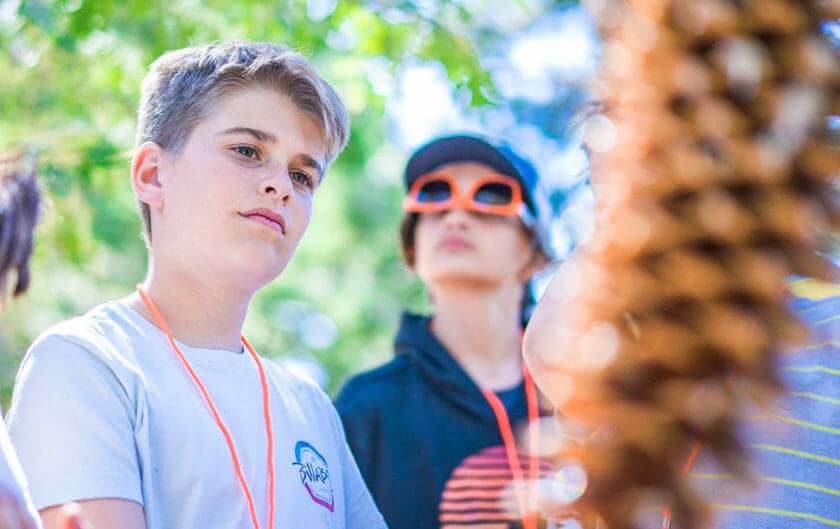Students hike through the forest to explore and learn about the ecosystems around them. They identify plants, study animals and learn about the impact of forest fires. Hands-on activities teach the history of the forest as ecosystems come alive before their eyes.
What’s Covered
Students embark on an interpretive hike on one of Pali’s many scenic trails through the San Bernardino National Forest. Throughout their hike, students stop to experience the forest using their (5) senses, identify different species of plants and trees and learn about the local ecosystems through visible examples of symbiotic relationships, genetic adaptations and ecological succession.
Lessons & Activities
Interpretive Hike
The 5 Senses
Vascular Plants
Tree Identification
Symbiotic Relationships
Educational Standards
Applicable Common Core/Next Generation Standards:
- NGSS 4-ESS2-1: Make observations and/or measurements to provide evidence of the effects of weathering or the rate of erosion by water, ice, wind, or vegetation.
- NGSS-MS-LS2-2: Construct an explanation that predicts patterns of interactions among organisms across multiple ecosystems.
- NGSS-MS-LS2-3: Develop a model to describe the cycling of matter and flow of energy among living and nonliving parts of an ecosystem.
- NGSS-5-LS1-1: Support an argument that plants get the materials they need for growth chiefly from air and water.
- NGSS-5-LS2-1: Develop a model to describe the movement of matter among plants, animals, decomposers, and the environment.
Ready to Get Started?
Accelerate your students’ learning with our exciting curriculum. Learn more about this hands-on, experiential education activity today.
